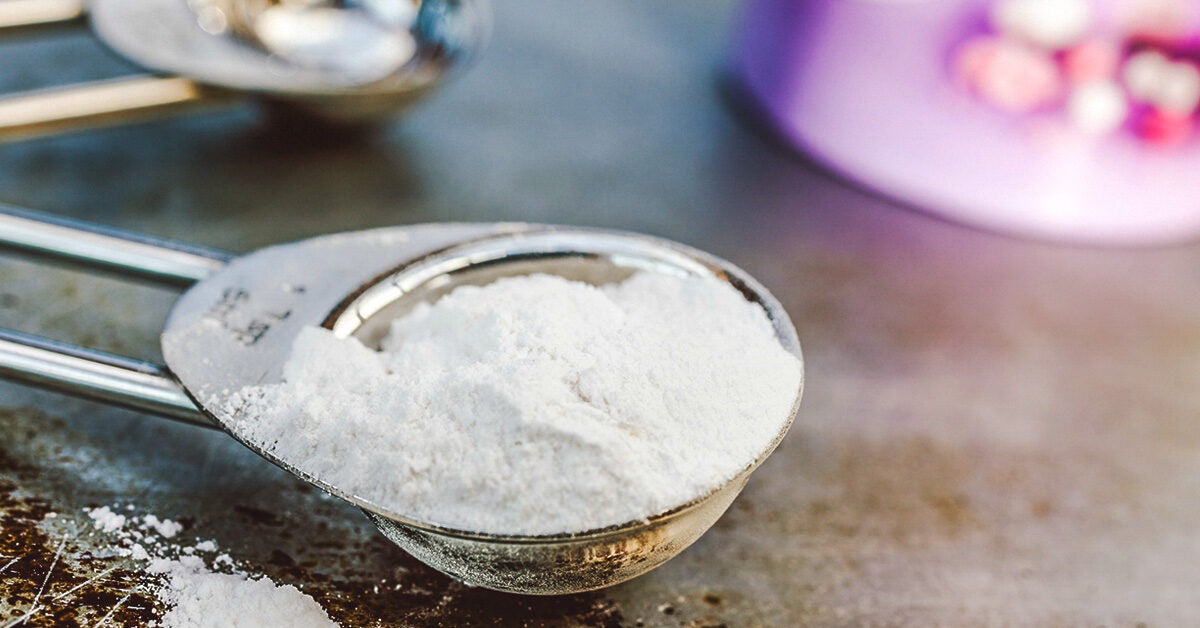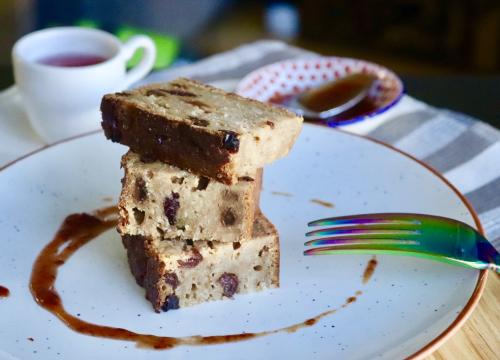

However, if the mixture is acidic, baking powder's additional acids will remain unconsumed in the chemical reaction and often lend an unpleasant chemical taste to food. Generally (in countries where the cup is used as a standard measure in cookery) one teaspoon (5ml) of baking powder is used to raise a mixture of one cup (200-250ml) of flour, one cup of liquid, and one egg. In 2006 the development of Rumford Baking Powder was designated an ACS National Historical Chemical Landmark in recognition of its significance for making baking easier, quicker, and more reliable." ]

When combined with baking soda, it is essentially the same as any single-acting baking powder, the only difference being that the acid is sodium pyrophosphate. Named "Bakewell", a mixture of sodium pyrophosphate and corn starch, the product is still part of regional culinary history. Smith, an inventor in Bangor, Maine, created a substitute product for American housewives, who were unable to obtain baking powder, cream of tartar or baking soda due to war food shortages. This was accomplished by the addition of corn starch, and in 1869 Rumford began the manufacture of what can truly considered baking powder. This was packaged in bottles, but Horsford was interested in using metal cans for packing this meant the mixture had to be more moisture resistant.

By the mid-1860s "Horsford's Yeast Powder" was on the market as an already mixed leavening agent, distinct from separate packages of calcium acid phosphate and sodium bicarbonate. Oetker started the mass production of baking powder in 1898 and patented his technique in 1903.Įben Norton Horsford, a student of Justus von Liebig, who began his studies on baking powder in 1856, eventually developed a variety he named in honor of Count Rumford. The same recipe he created in 1891 is still sold as "Backin" in Germany. August Oetker, a German pharmacist, made baking powder very popular when he began selling his mixture to housewives. While various baking powders were sold in the first half of the 19th century, our modern variants were discovered by Alfred Bird. Traditional baking powder was composed of a mixture of tartaric acid and bicarbonate of soda (baking soda), a quantity of flour or cornstarch usually being added to reduce the strength. Baking powders that contain only the low-temperature acid salts are called single acting. High-temperature acid salts are usually aluminium salts, such as calcium aluminium phosphate. Common low-temperature acid salts include cream of tartar, calcium phosphate, and citrate. Most modern baking powders are double acting, that is, they contain two acid salts, one which reacts at room temperature, producing a rise as soon as the dough or batter is prepared, and another which reacts at a higher temperature, causing a further rise during baking. Baking powder is used instead of yeast because its action is instantaneous, while yeast takes two to three hours to produce its leavening action. When dissolved in water the baking powder's ingredients react and emit carbon dioxide gas which expands, producing bubbles to leaven the mixture. It is most often found in quick breads like pancakes, waffles, and muffins. It's a great recipe, and I'm sure the cream of tartar does what it's supposed to do, but I really wonder why it didn't just call for baking powder.Baking powder is a dry chemical leavening agent used in cooking, mainly baking. Randy, North Idahoĭo you need cream of tartar to make meringue frothy?Ĭan cream of tartar be used alone instead of with bicarbonate of soda? This would be useful for someone who is supposed to avoid all types of soda and salt.Ĭream of tartar is really good to use and i use it all the time!Īlthough I'd seen cream of tartar called for in meringues, I hadn't ever bothered to use it until I found a sugar cookie recipe that called for it. It can also be used with fresh fruit like apples/bananas,to keep them from turning brown,after being cut.we use in our kitchen,in eggs to keep them from turning 'green',on our steam table. Is there any dairy product in cream of tarter? -de


 0 kommentar(er)
0 kommentar(er)
